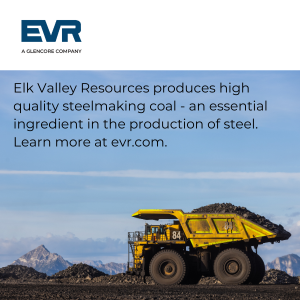
The Province of British Columbia has announced an update to the Elk Valley Water Quality Plan (EVWQP), aiming to strengthen environmental protections for fish, wildlife, ecosystems, and communities affected by mining activities in the Elk Valley.
While the Province has taken important steps to strengthen mining-related water-quality governance through the updated EVWQP, it fails to address concerns related to Fernie’s municipal sewage effluent and ongoing clear-cut logging.
This marks the first amendment to the plan since its inception in 2014. Developed after a year-long consultation with First Nations, local governments, industry stakeholders, and the public, the update shifts the plan to a government-led framework — providing clearer guidance and accountability for managing water quality in the region.
The move responds directly to long-standing concerns from Ktunaxa Nation governments and Elk Valley residents about water quality and ecological health regarding elevated selenium levels caused by mining runoff.
“This amendment strengthens the Province’s commitment to protecting the environment and wildlife in the Elk Valley while supporting an industry that is crucial to our regional and national economy,” stated the Ministry of Environment in a release.
The new framework sets the stage for further improvements. A review of the selenium water-quality target for the Koocanusa Reservoir is already underway, with the Province committing to continued engagement with partners as that work progresses.

Elk Valley Resources (EVR), which took over from Teck Coal, updated the community on the progress made under the EVWQP at its annual in-person open house last November. According to Colin Miller, Program Director of Water Quality and Projects at EVR, the company’s four current water treatment facilities are removing between 95% and 99% of selenium from treated water.
“The plan is working,” said Miller. “Selenium concentrations have stabilized and are now reducing downstream of treatment. We are committed to further action, with plans to build six additional treatment facilities by 2027.”
Water Treatment Highlights:
• 4 operating facilities currently removing up to 99% of selenium
• 6 new facilities to be completed by 2027
• Improving trends in water quality downstream from treatment sites
This follows years of scrutiny after selenium pollution from mine waste began impacting rivers and streams downstream of major mining operations.

What About Municipal Wastewater?
While the province and industry are making strides in reducing mine-related pollution, residents continue to raise questions about the City of Fernie’s longstanding practice of discharging treated sewage into the Elk River. Environmental advocates have pointed to outdated infrastructure, ongoing regulatory non-compliance, and a lack of transparency from the city — issues not directly addressed in this provincial update.
Whether the updated framework will apply pressure or introduce new oversight on municipal discharges remains to be seen. Many in the community are calling for more balanced enforcement and investment in upgrading local wastewater systems alongside mining-related remediation.

What About Clear-cut logging?
Doman Building Materials Group Ltd. owns over 90,000 acres of managed forests in Southeast British Columbia and claims to follow sustainable forest management practices. However, the cumulative impacts of Doman’s clear-cut logging—such as increased erosion, elevated runoff, and changes to water temperature and quality—raise serious concerns for sensitive aquatic habitats in mountain ecosystems.
While the Province’s updated EVWQP aims to address mining-related industrial discharge, it does not account for the cumulative effects of forestry activities. As a result, the broader environmental impacts of logging remain largely unexamined. Doman’s operations are governed by the Private Managed Forest Land Act of British Columbia, which critics argue provides insufficient protection for ecological values.
Importantly, Doman’s forestry activities fall outside the formal monitoring and regulatory scope of the EVWQP, leaving a critical gap in the Province’s overall strategy for water quality protection in the Elk Valley.
Conclusion:
Despite the recent updates to the Elk Valley Water Quality Plan, the Province of British Columbia continues to fall short in fully protecting the Elk Valley watershed. The revised plan focuses narrowly on mining-related pollution, leaving out two major sources of concern: municipal sewage discharge from the City of Fernie and clear-cut logging impacts from ongoing forestry operations.
By excluding these critical contributors to water quality degradation, the Province’s approach remains incomplete—raising concerns among residents, First Nations, and environmental advocates about the long-term health of the Elk River and its surrounding ecosystems.
Learn More
Updated Elk Valley Water Quality Plan: https://elkvalleywaterquality.gov.bc.ca

























